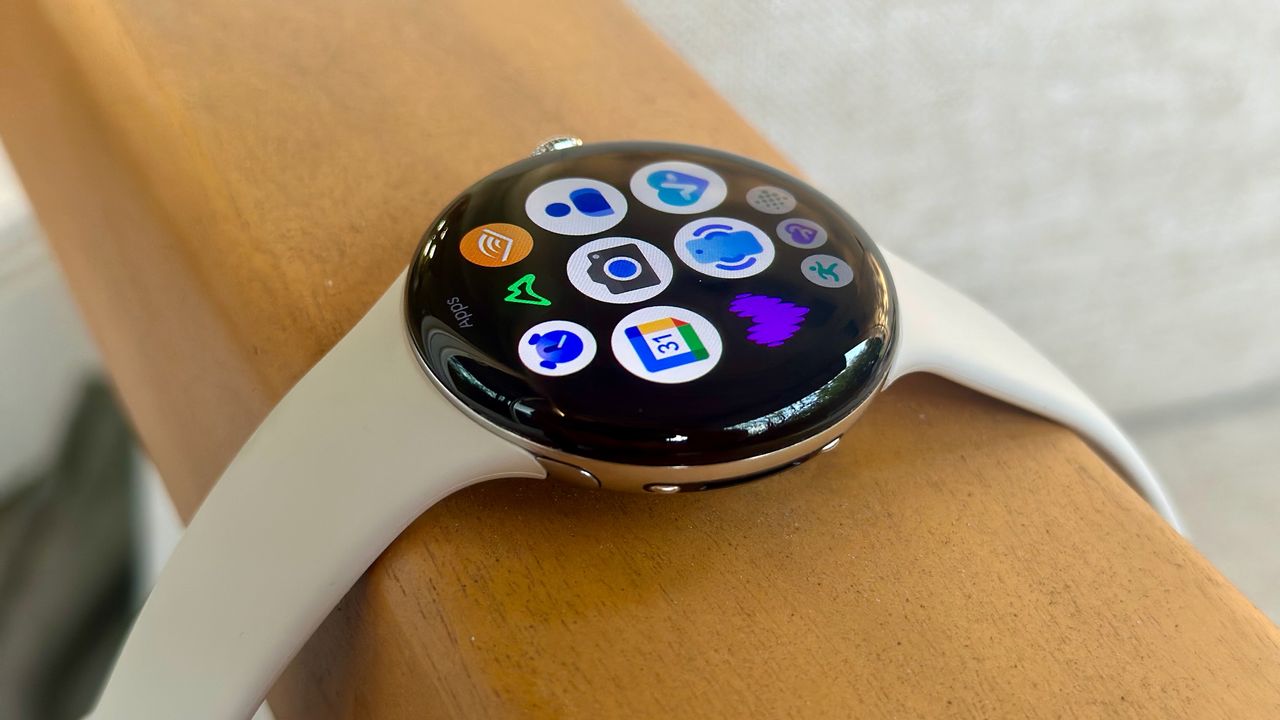
I got my hands on the Google Pixel Watch 4 about two weeks ago. I've tested new features like Gemini Raise to Talk and adjusted to the new display dome. I wore the Watch 4 for a half-marathon to test its accuracy and a hike to see how its satellite SOS feature would work in real-life situations. And despite my nitpicks, I came away impressed.
I'm not ready to give the Watch 4 a full review yet, simply because I want more time to be certain of its battery life, health precision, and new sports tools. Nor will I be able to test the new Fitbit AI coach with Gemini until it launches later in October.
So far, though, I can safely say Google took the solid Pixel Watch 3 template and made it better in noticeable ways, perfect for long-time fans. However, anyone with qualms about the old Pixel Watches is unlikely to be converted by this generation.
Specs |
Google Pixel Watch 4 |
|---|---|
OS |
Wear OS 6 |
CPU |
Snapdragon W5 Gen 2, Cortex M55 co-processor |
Display |
1.33- or 1.49-inch Actua 360 AMOLED LTPO display, 320ppi 3,000 nits, 1-60Hz refresh rate |
RAM / Storage |
2GB + 32GB |
Connectivity |
Bluetooth 6, Wi-Fi 2.4/5GHz, NFC, UWB, LTE (optional), dual-frequency GPS, Galileo, Glonass, (ROW) Beidou, QZSS, Navic, Satellite SOS, |
Sensors |
Compass, altimeter, barometer, magnetometer, 3-axis accelerometer, gyroscope, ambient light, multi-path optical heart rate sensor, cEDA, SpO2, ECG, far field skin temperature sensor |
Battery |
41mm: 325mAh, 30 hours with AOD, 48 hours with Battery Saver 45mm: 455mAh, 40 hours with AOD, 72 hours with Battery Saver |
Charging |
41mm: 15 minutes to 50%, 25 minutes to 80%, 45 minutes to 100% 45mm: 15 minutes to 50%, 30 minutes to 80%, 60 minutes to 100% |
Materials |
Recycled aluminum |
Protection |
Custom Corning Gorilla Glass 5, 5ATM, IP68 |
Band |
Active (fluoroelastomer) |
Dimensions |
41 x 41 x 12.3mm / 45 x 45 x 12.3mm |
Weight (w/out band) |
41mm: 31g 45mm: 36.7g |
Colors |
Matte Black, Polished Silver, Champagne Gold (41mm), Satin Moonstone (45mm) |
You haven't worn a domed display like this before
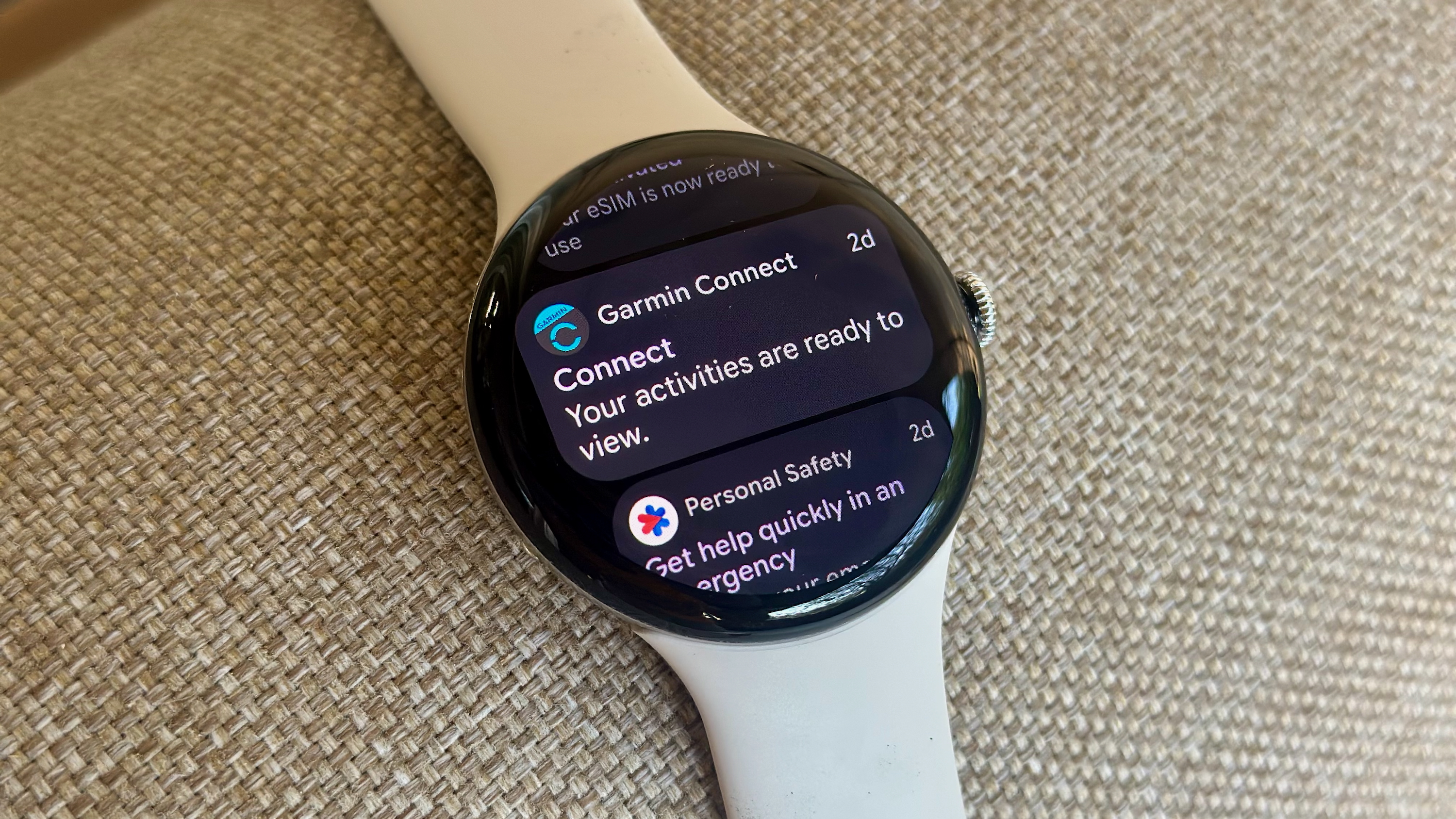
The Watch 4's Actua 360 display is the "first of its kind," and it's easy to believe Google's claim because a flat, classic style is what most other brands prioritize. Google's engineers explained that stretching and rounding the display glass allowed them to increase the display surface area without changing the internal design.
Google confirmed that the Watch 4 41mm and 45mm have 1.33-inch and 1.49-inch displays, compared to 1.27 inches and 1.43 inches in the last generation, with the dimensions otherwise unchanged.
After days with the Watch 4, I've grown more accustomed to its roundness, which creates a subtle 3D effect that warps the middle content upward. Since Wear OS 6 menus themselves shift and shrink, the UI makes this choice feel less out of place. But it's still an adjustment!
I think it comes down to personal preference. Derrek, who did the original hands-on, told me he isn't a fan, while our freelancer Tshaka has a unit and says it's the "best looking display on a smartwatch."
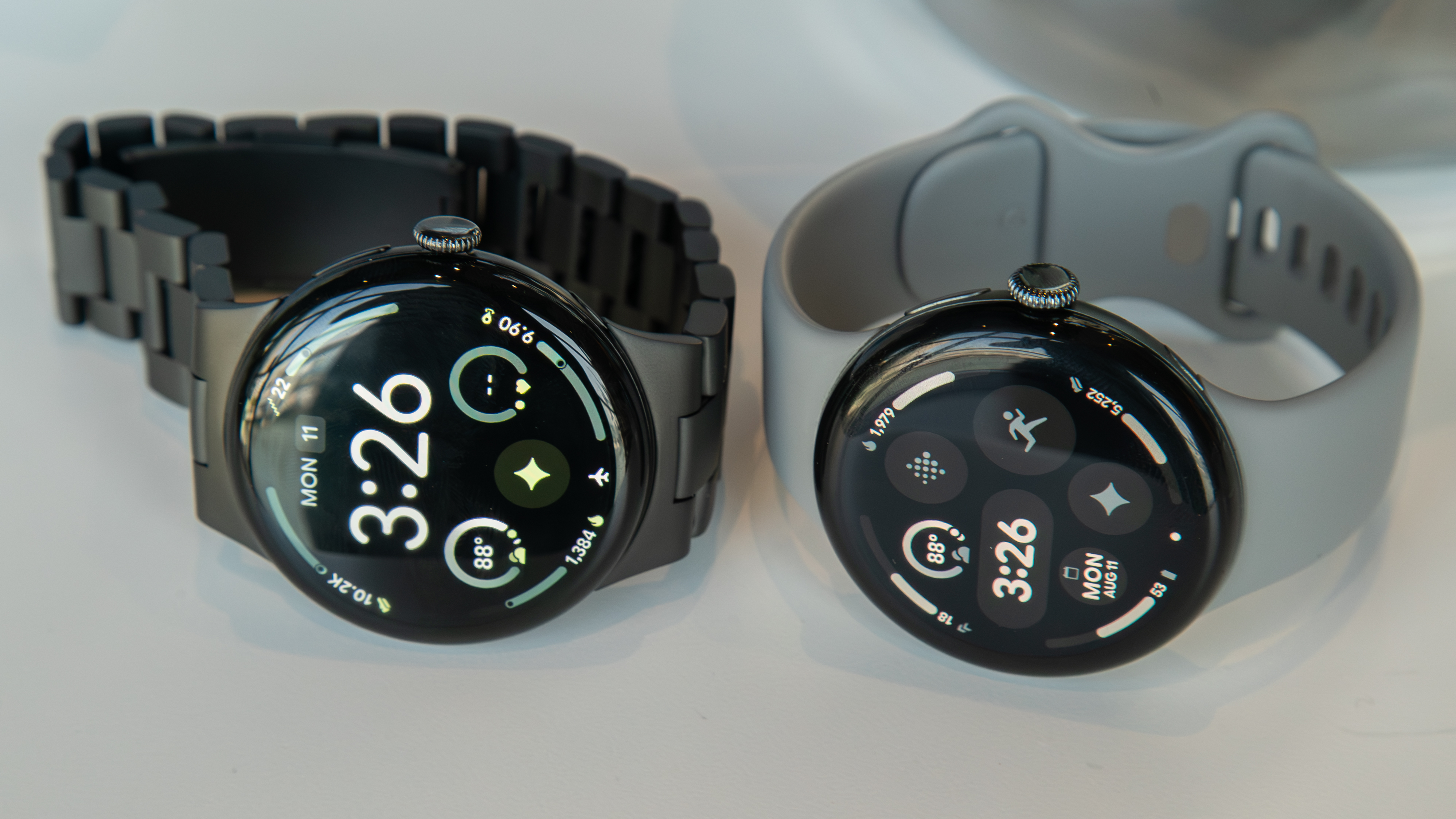
The positive to this new design is the smaller display border, with the touchscreen running right up to the curved edge. Google can't go any further unless it stretches the Pixel Watch 5's touchscreen onto the rounded edge, as this 2023 Fitbit patent proposed.
I also appreciate how the Watch 4 45mm only weighs 67g, while the Galaxy Watch 8 Classic (87g) and OnePlus Watch 3 (81g) aren't nearly as comfortable.
My main display complaint returns from my Watch 3 review: a bezelless design would benefit from sapphire glass, especially with Google marketing this to athletes. And aside from durability concerns, Gorilla Glass 5 doesn't have the best antireflective layer. The Actua 360 dome seems to catch more light than before, so any bright lights nearby obscure the AOD mode.
A Google engineer explained that they've heard feedback on adding sapphire glass and might consider it in future Pixel Watches, but suggested that its "expensiveness" factors against the idea. He also noted that the bottom Watch 4 glass uses 8th-generation Gorilla Glass for extra durability, at least.
Google's dual-frequency upgrade is genuinely good
The Pixel Watch 4 added dual-frequency GPS, and a Pixel Watch rep told me it does very well in "urban canyons" that can block or reflect GPS-only signals. So I wore it during a half-marathon in San Jose, with my hyper-accurate Garmin Forerunner 970 on my other wrist as a comparison point.

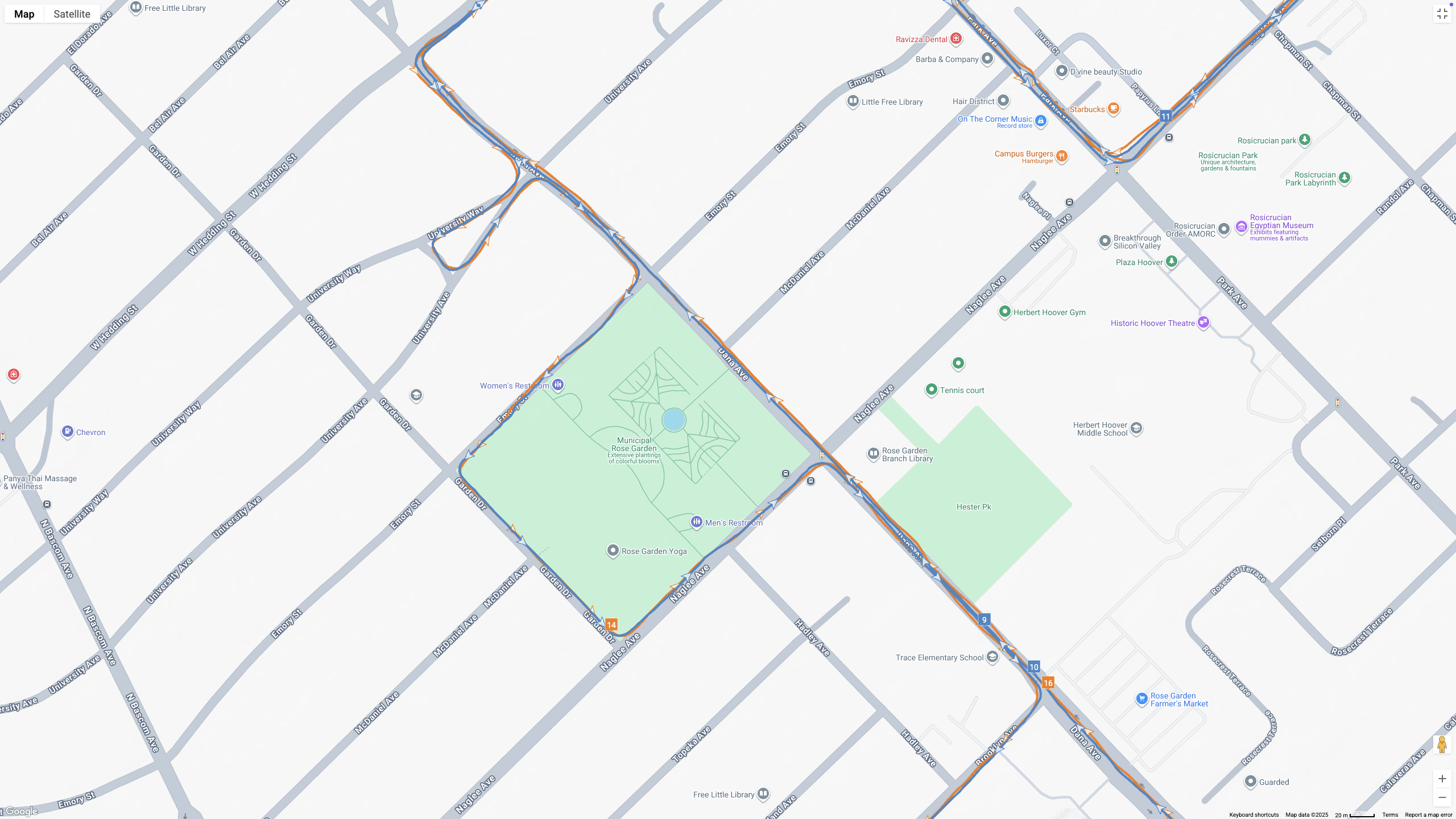

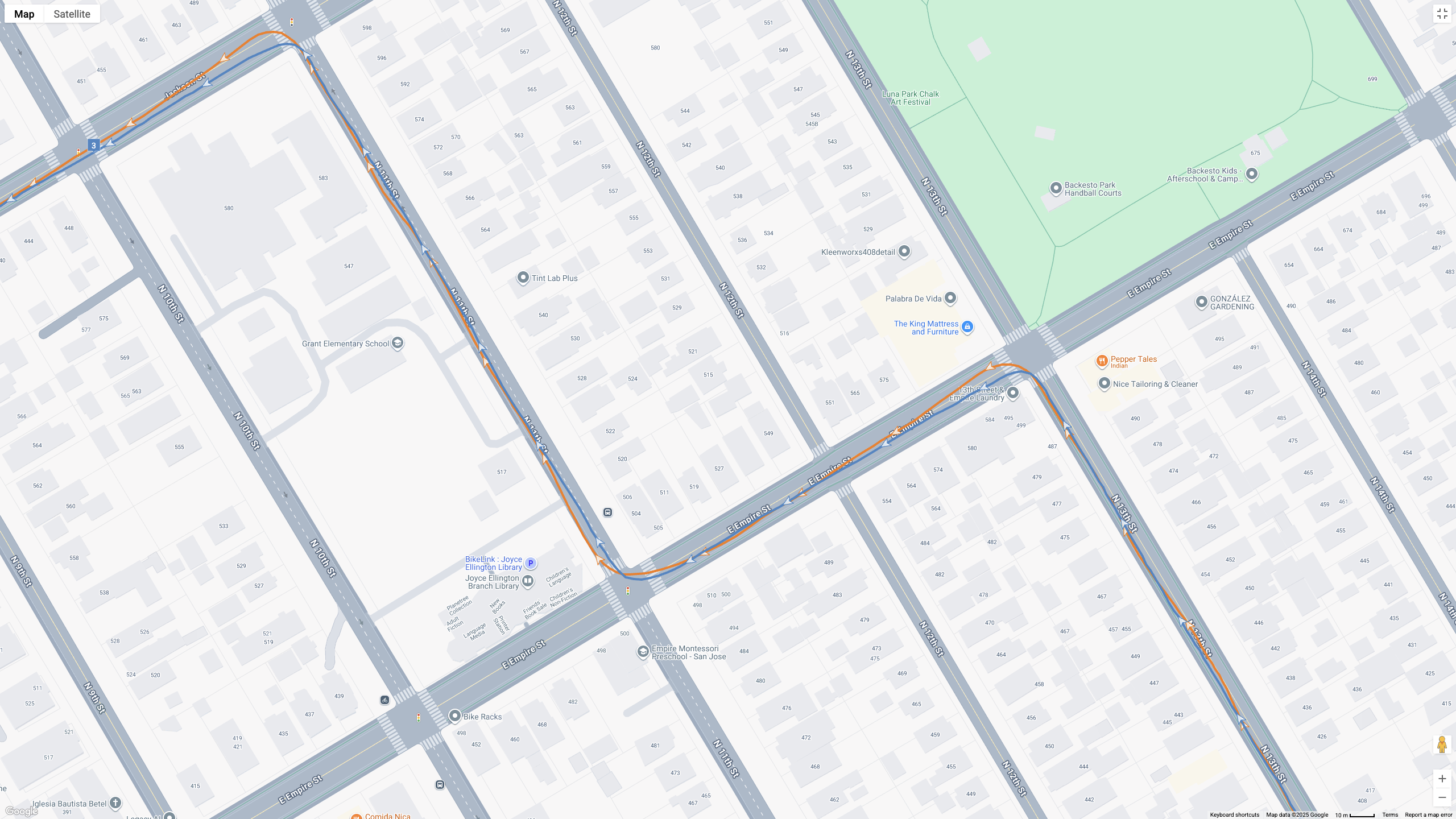


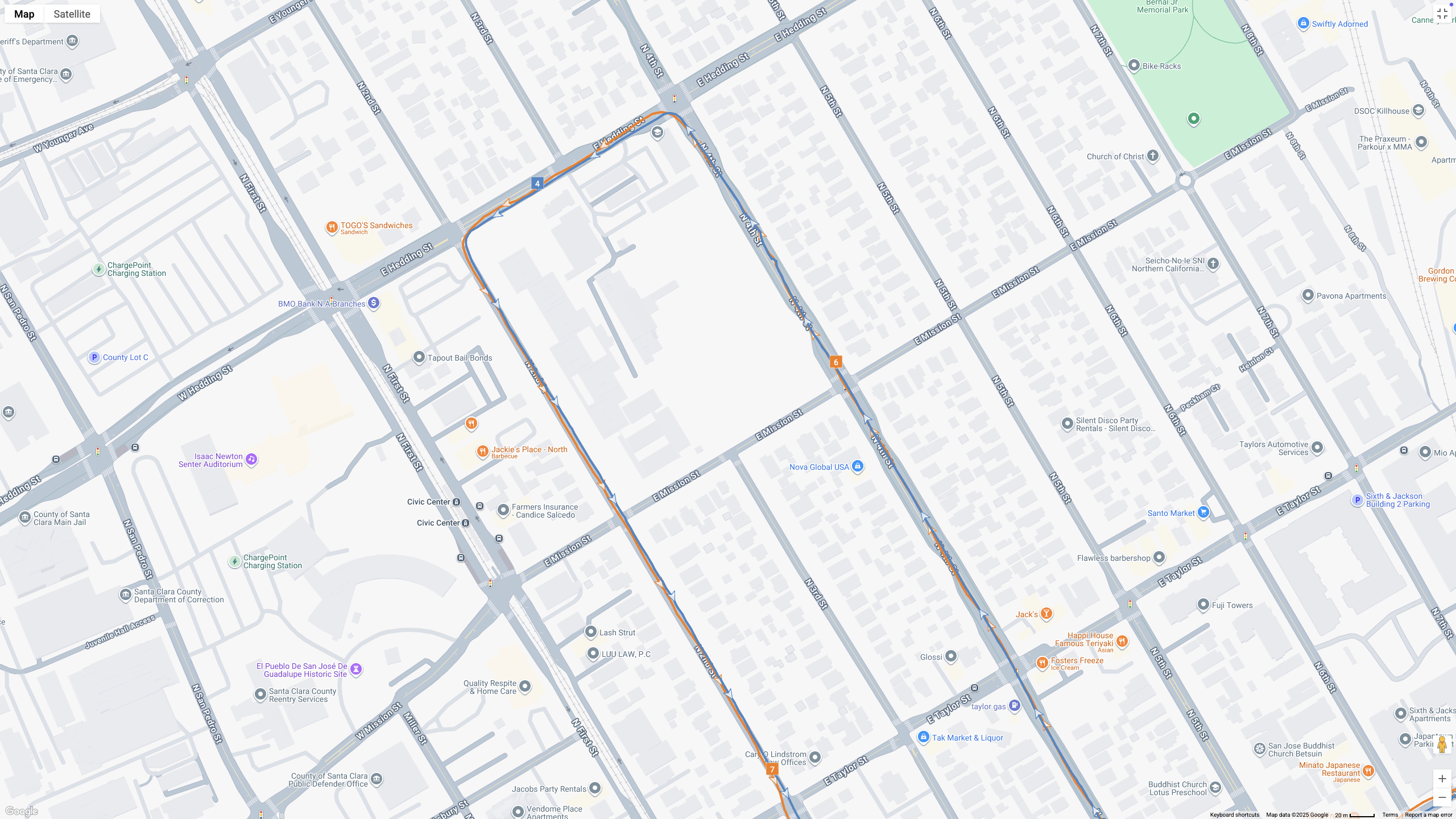
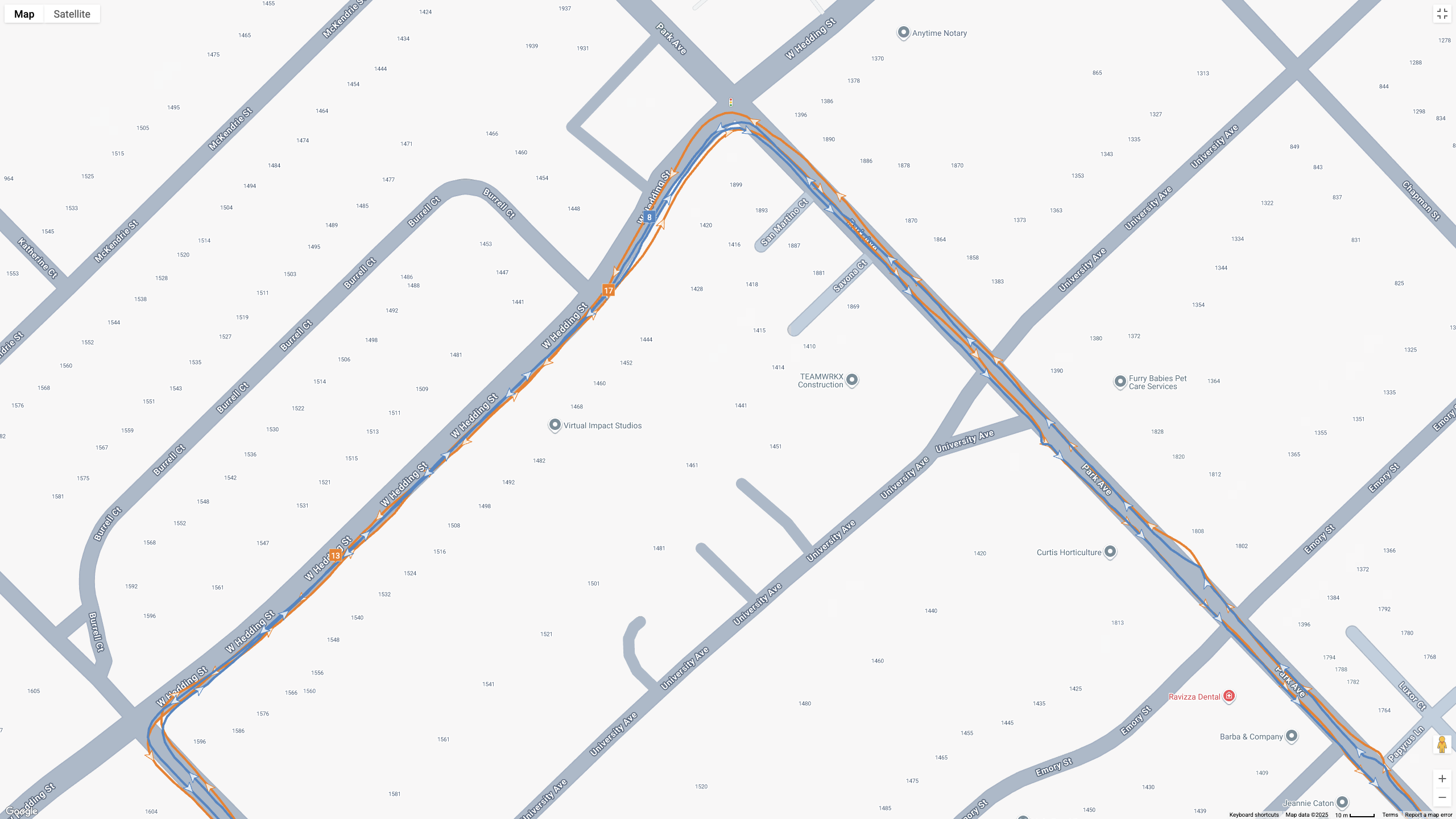
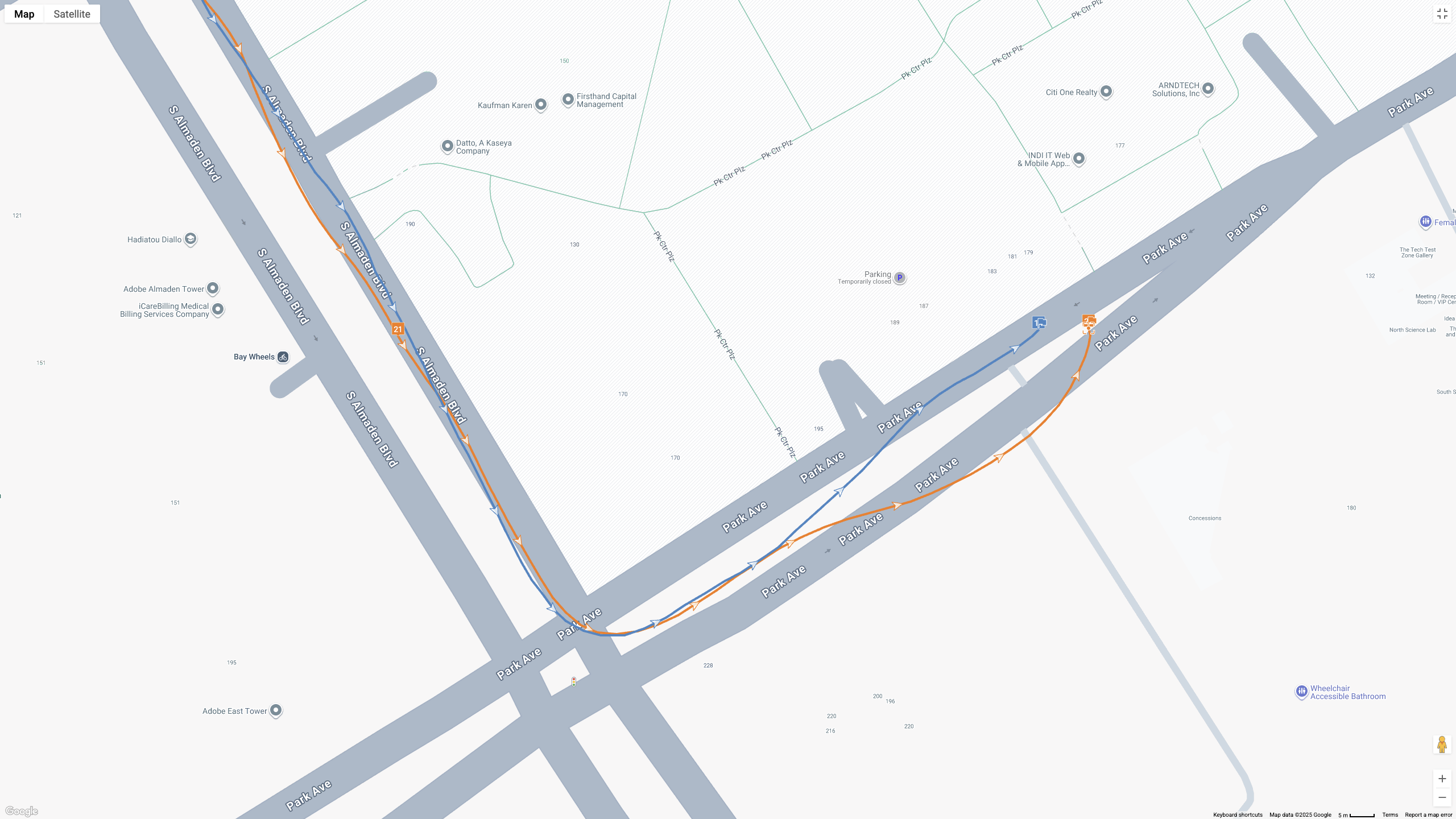
The Pixel Watch 4 (orange line) had whole miles where it was dead-center on my actual path, matching Garmin (blue line). However, it struggled at times downtown, particularly near tall buildings, with a few moments where the line looped 10 yards outward before returning to my actual position. It also struggled with underpasses.
Still, the final result was only 100m less than the Forerunner 970 after 13.2 miles, and compared to how terrible the Pixel Watch 3's GPS-only tracking was, I trust the Watch 4 to handle normal signal conditions about as well as any other fitness brand — certainly better than Samsung's dual-band GPS. It even beat Garmin's accuracy a couple of times around tall buildings, though the Forerunner 970 won overall.
What's most impressive is that I finished the race with the Pixel Watch 4 at 87% power after a 1:45 finish — or about 7.5% battery per hour with dual-frequency GPS as the default. That's truly excellent efficiency, and makes me think the Watch 4 could easily last for an all-day race event.
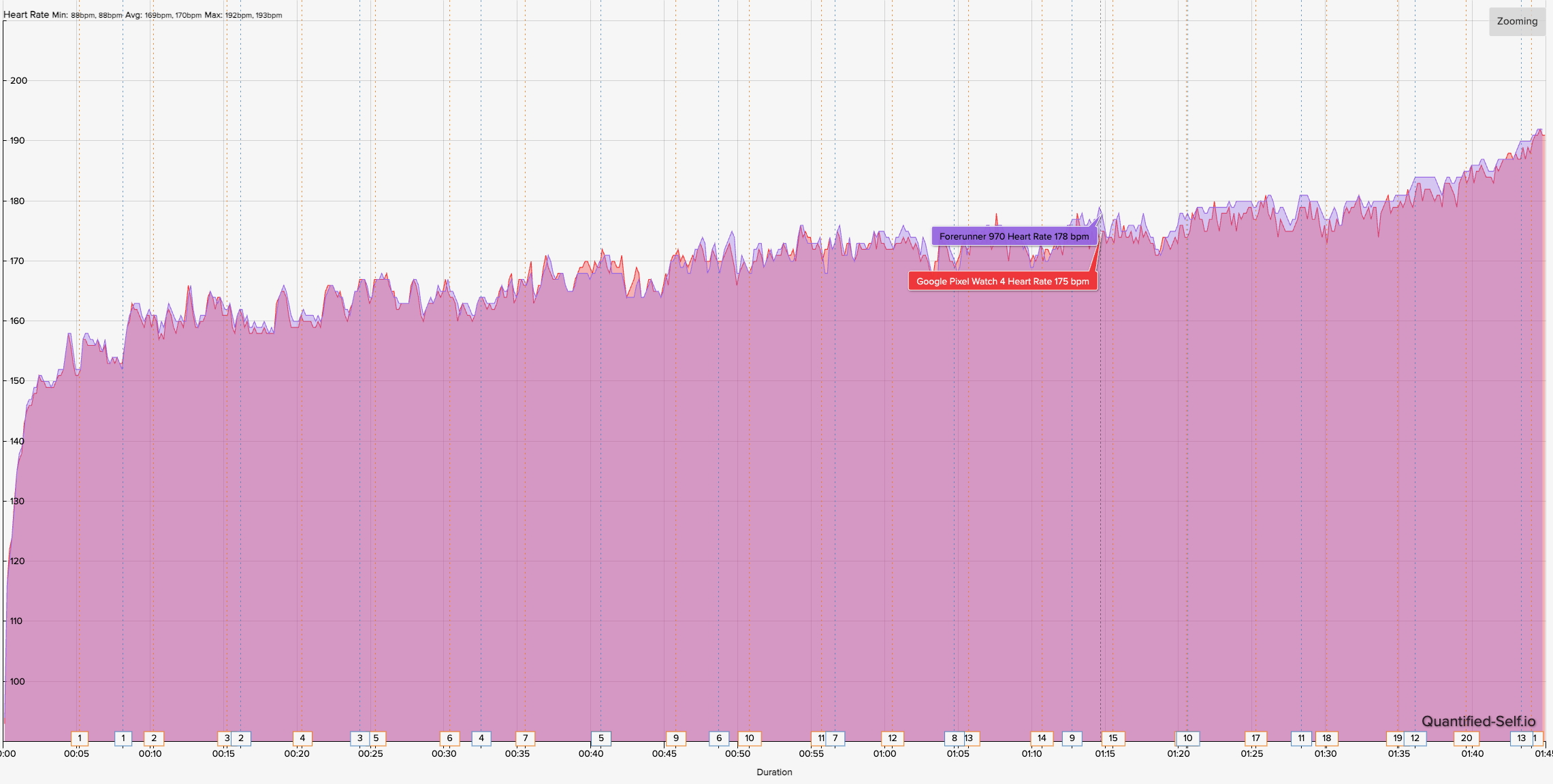
As for HR accuracy, I wore a COROS HRM armband as a control group during the race, and the Pixel Watch 4 performed at the same level as the Watch 3 last year. That is to say, it's close to reality, but tends to show slightly deflated data (about 1–2 bpm short), particularly in the 170+ bpm range.
It ended up 1 bpm short on average, which will be good enough for most athletes; since Wear OS watches still don't support external HRMs like chest straps, anyone who needs perfect data will need to look elsewhere.
Garmin Raise to Talk is really convenient and mostly seamless
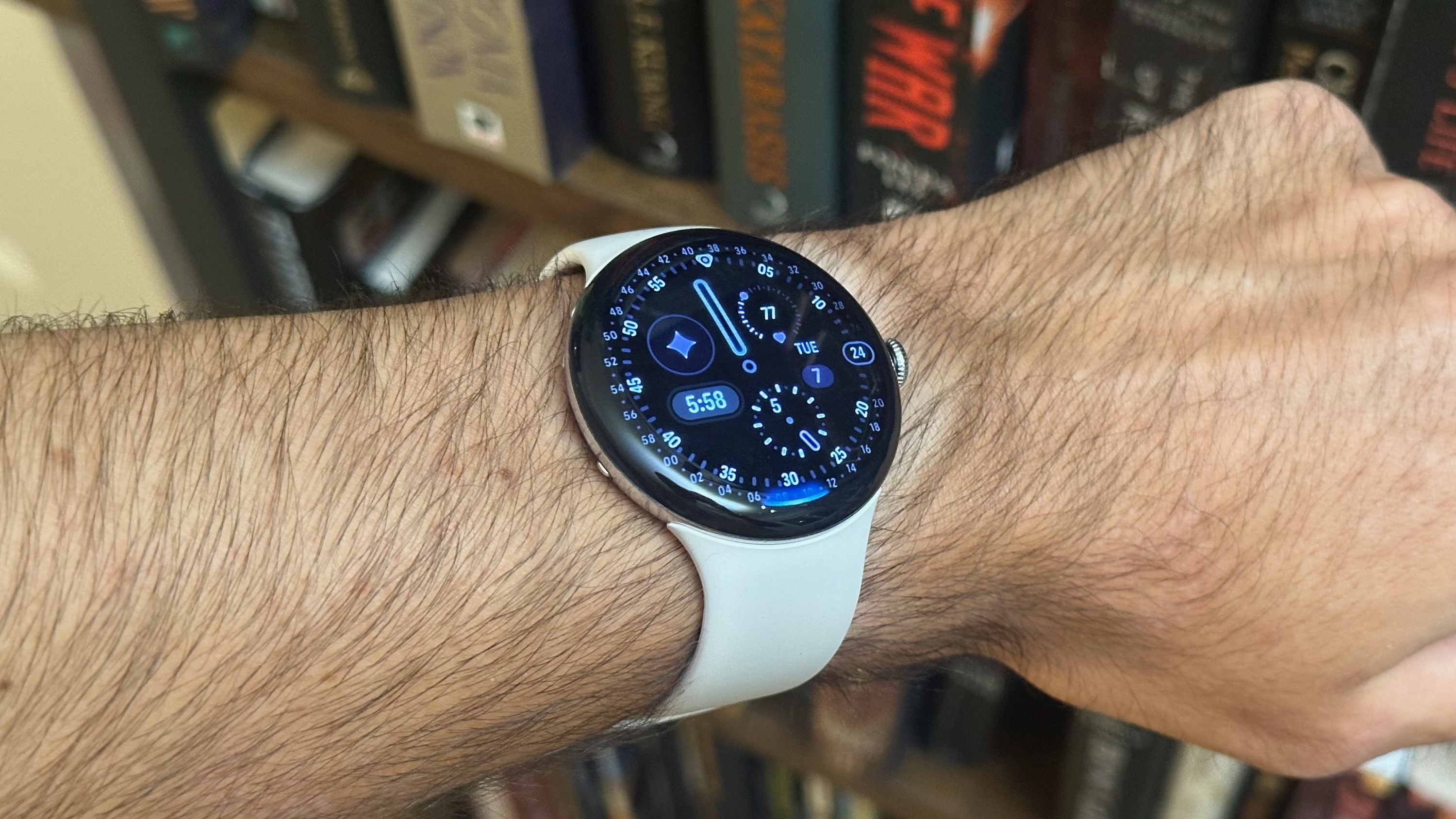
I've never much liked holding down the Pixel Watch's finicky Side button or wasting battery on the always-listening "Hey Google" command to summon the Assistant. With Gemini as the new crown jewel of the Wear OS experience, I'm glad the Pixel Watch 4 has a third method to summon the assistant, Raise to Talk.
As the name suggests, all you need to do is lift your wrist and start talking. It's so convenient, and cutting out the wake word or button press makes the interaction feel much more natural. I'm a big fan, and given how popular Gemini is, I bet some Watch 2 or 3 owners will upgrade to get it.
Because someone could easily trigger Gemini by accident if they have active hands while talking, Google created dual thresholds you have to pass to trigger it: Strong upward movement, then a command spoken loudly within two seconds to grab Gemini's attention.
The default Raise to Talk settings led to moments where I raised my arm but failed to pass these conditions. The Pixel Watch team recommended I go to Settings > Gestures > Raise to Talk for increased sensitivity and a longer voice window. So far, this has made summoning Gemini easier, though with occasional false-positive motions.
Battery life and charging are as good as advertised, with one caveat
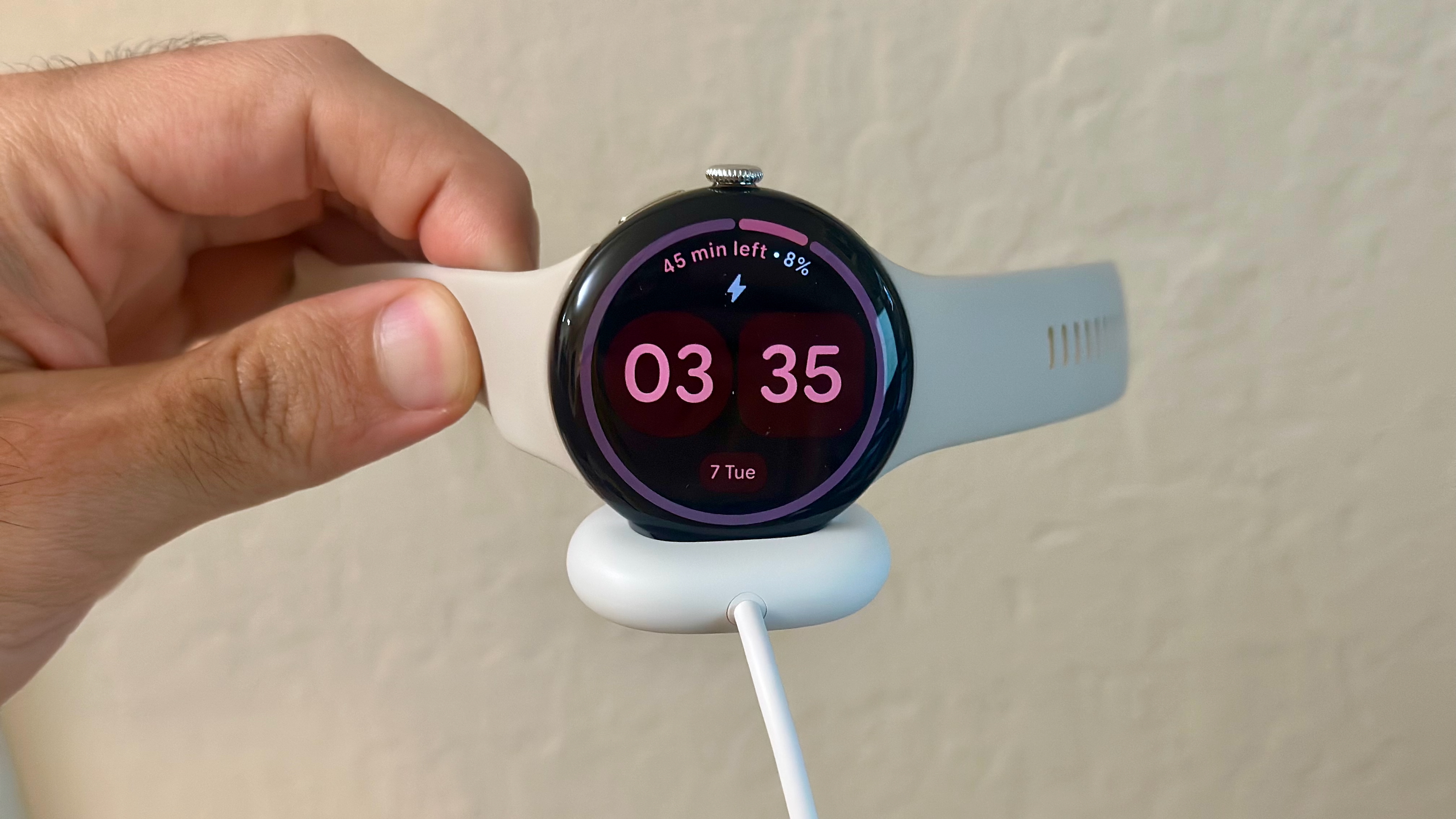
Google promises 30 or 40 hours with the always-on display active for the Watch 4 41mm and 45mm; I only have the larger model to test, but two days has been the norm with AOD, sleep tracking, and daily GPS-tracked workouts.
You could reasonably be annoyed that Google swapped to a new proprietary charger, but the speed boost is so massive that you'll get over it, as I did. I can take my Watch 4 off at 5%, plop it on the Quick Charge Dock, and see that I only have to wait 45 minutes to reach 100%. It's also nice that the watch display is propped up to check your progress.
I have noticed, however, that the magnetic charger-watch connection could be stronger; the Watch 4 and its straps need a flat surface to support them so that it doesn't tip off the Dock. You're supposed to get a phone notification when that happens, but it didn't seem to trigger for me. I've had the best luck sitting the Dock on my metal PC case, where it's magnetized and sits flat and secure.
The new-ish Snapdragon W5 Gen 2 holds up, for now
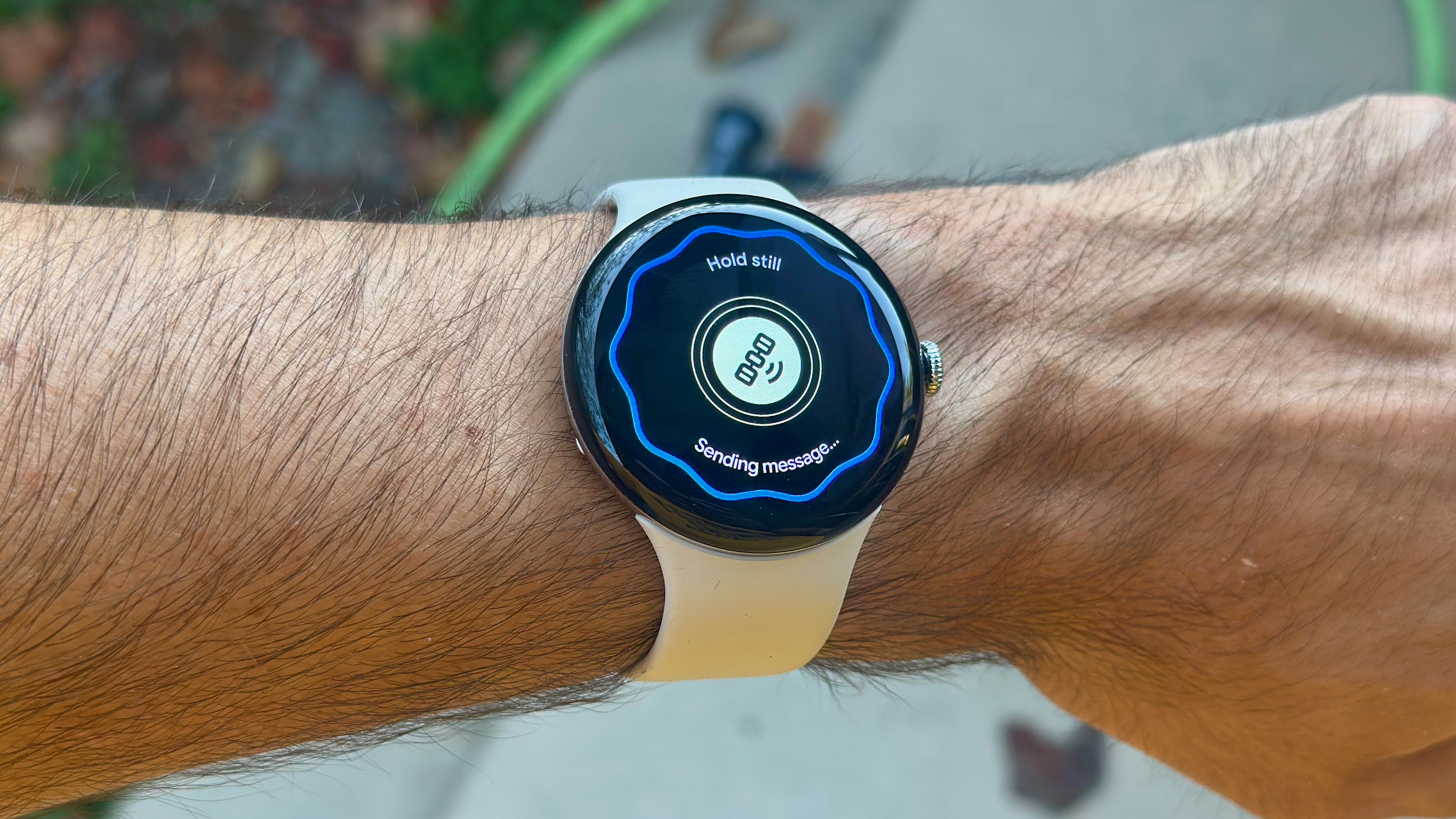
I'll admit to being disappointed that the Snapdragon W5 Gen 2 keeps the same old Cortex cores as its 2022 predecessor. The Watch 4 does add a newer Cortex-M55 co-processor that's "25% faster at half the power," and the W5 Gen 2 itself is 20% more efficient at hitting Gen 1 benchmarks. It's just not especially groundbreaking aside from satellite SOS, or close to the Galaxy Watch 8's Exynos W1000 in power.
Admittedly, the Watch 4 doesn't really need more power. Apps could be slightly faster to open, but otherwise everything scrolls effortlessly with little lag or juddering. Zooming in or out in Google Maps is buttery smooth, and Gemini answers questions quickly.
That said, I'm curious if a future Snapdragon or RISC-V chip would be capable of handling more robust on-device AI tricks, leaving the Watch 4 behind in a year or two. The only current one, Smart Replies, comes up with some decent contextual answers, but a Google rep confirmed the Watch 4 will default to your phone's Gemini Nano unless you're using the LTE model with no phone around.
More layers to dive into
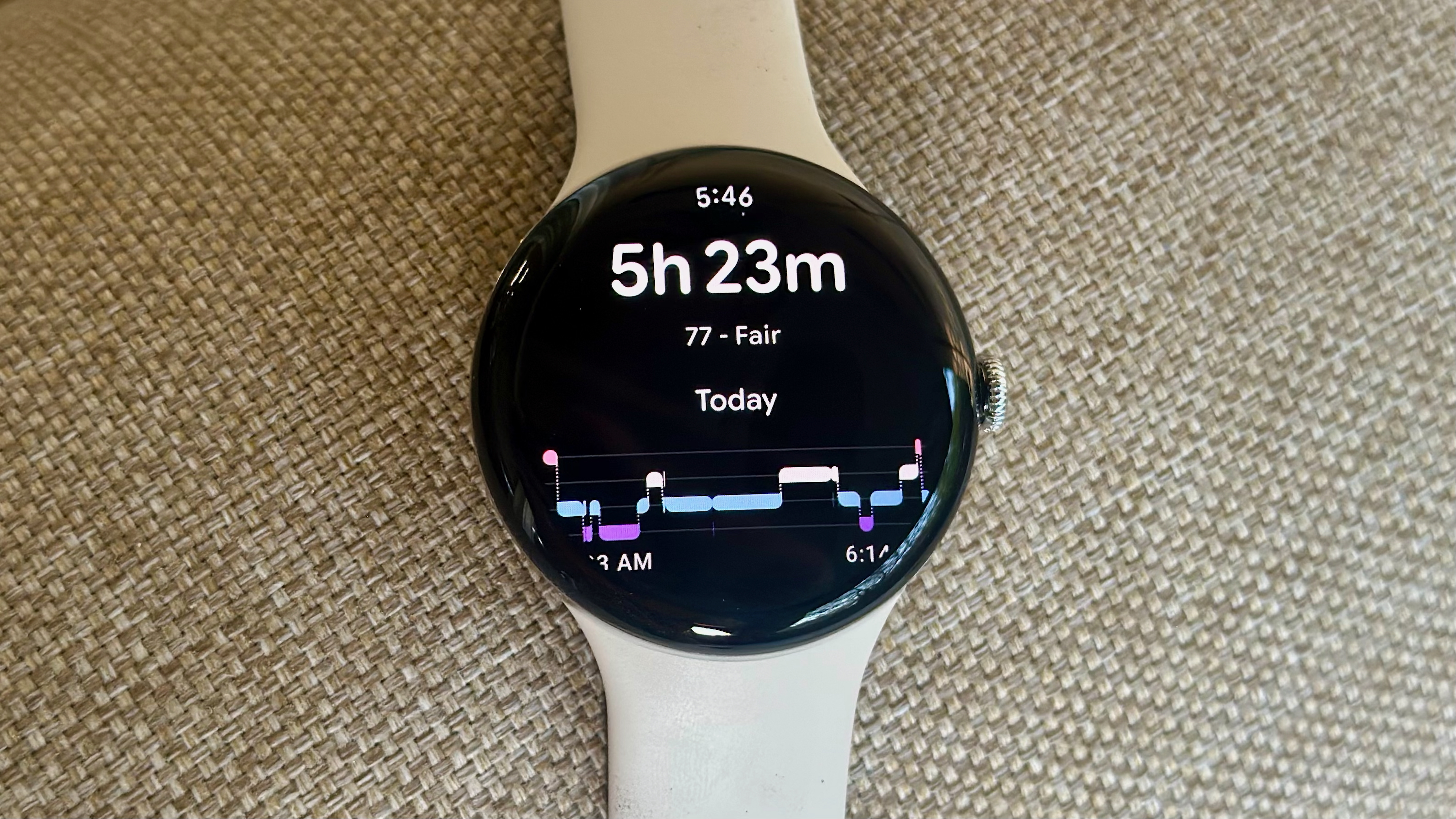
Although I'm scared to try it, I still hope to take apart the Pixel Watch 4 at some point, given its repairable design. Google likened this process to opening up a quartz watch to replace the battery, but said anything beyond that would be like servicing a mechanical watch — not for the faint of heart. They recommend using your warranty repair options first, but confident types will be able to use iFixit parts.
I also need more time to judge the Watch 4's new sleep algorithm, and the new Gemini-backed Fitbit AI coach won't arrive until late October.
Overall, though, I feel confident saying the Pixel Watch 4 doesn't have any serious negative surprises. In many ways, it's a lot like the redesigned Galaxy Watch 8, in that you'll need to see it in person to decide if you like Google's domed display or Samsung's flat, squarish case.
Both have earned their spots atop the best Android smartwatches, and I'm excited to keep wearing and testing out the Pixel Watch 4!
AI on your wrist
The new Pixel Watch 4 sports the latest Snapdragon chip for faster performance and on-device AI. There's also dual-frequency GPS, multi-day battery life, and new charger for faster top-ups.







